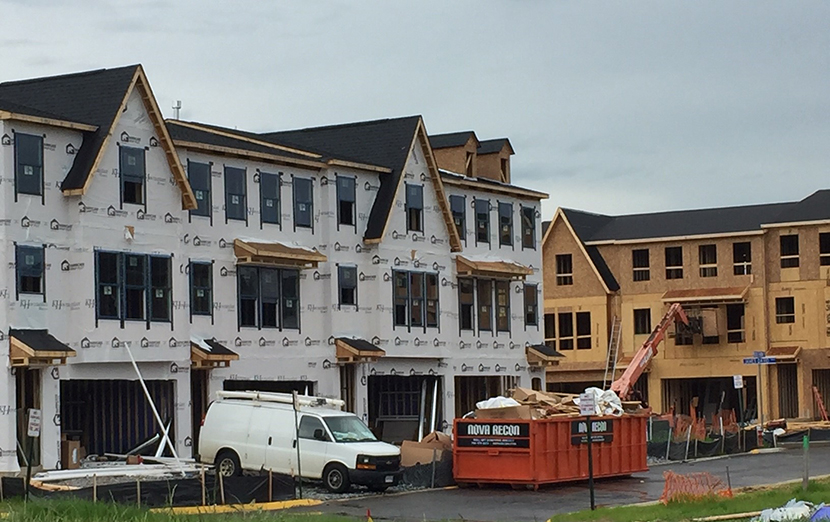
Builder Confidence Sets 3rd Straight Record

(Housing construction in Fairfax County, Va.)
For home builders, the bright spots are only getting brighter. The National Association of Home Builders said its monthly index builder confidence set its third straight record in November.
The NAHB/Wells Fargo Housing Market Index increased by five points to 90 in November, easily breaking the previous record 85 set in October. All three HMI indices also posted record readings in November. The HMI index gauging current sales conditions rose six points to 96; the component measuring sales expectations in the next six months increased one point to 89; and the measure charting traffic of prospective buyers rose three points to 77.
Looking at three-month moving averages regionally, the Northeast increased two points to 83; the Midwest jumped six points to 80; the South rose four points to 86; and the West increased four points to 94.
“Builder optimism is being bolstered by strong current sales,” said Mark Vitner, Senior Economist with Wells Fargo Securities, Charlotte, N.C. “The continued strength in sales into November is notable, as home buying tends to slow in the fall. Apparently, with so many folks working from home there is more time to shop for one.”
Vitner noted the surge in home builder confidence is driven by the shift in home buying toward the suburbs and exurbs, where new residential development tends to be more prevalent. “Expectations for sales for the next six months continue to hit new highs,” he said. “Builder confidence remains high despite continuing worries about elevated lumber prices, which have abated somewhat, and the continued difficulties finding and developing new lots.”
“Historically low mortgage rates, favorable demographics and an ongoing suburban shift for home buyer preferences have spurred demand and increased new home sales by nearly 17 percent in 2020 on a year-to-date basis,” said NAHB Chairman Chuck Fowke, a custom home builder from Tampa, Fla. “Though builders continue to sign sales contracts at a solid pace, lot and material availability is holding back some building activity. Looking ahead to next year, regulatory policy risk will be a key concern given these supply-side constraints.”
NAHB Chief Economist Robert Dietz said headwinds persist. “Affordability remains an ongoing concern, as construction costs continue to rise and interest rates are expected to move higher as more positive news emerges on the coronavirus vaccine front,” he said. “In the short run, the shift of housing demand to lower density markets such as suburbs and exurbs with ongoing low resale inventory levels is supporting demand for home building.”
